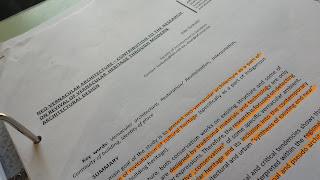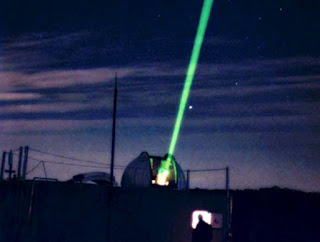NOTES:
Turkusic’ E. (2011) ‘Neo Vernacular Architecture: Contribution to the Research on Revival of Vernacular Heritage Through Modern Architectural Design’ Conference Paper, University of Sarajevo.
SUMMARY:
- Present no-vernacular archiecture as a part of a broad range of revitalization of cultural heritage
- Designed by traditional materials and technology
- Research is focused on detecting the aspects of active and creative ‘conservation’
- Revival of vernacular heritage
- Inclusion into the contemporary trends
- “synthesis of existing and new” trends
o Regional
o Ambient
o Contextual
o Local-eclectic
o Formalistic
o Retro-traditional
o Psuedo-architectural
Design approaches
INTRODUCTION:
- Revival of vernacular heritage
- Architectural and urban ‘synthesis of existing and new’
o Genius loci?
o Spirit of time?
- Neo-vernacular architecture
o Within:
Regional
Ambient
Contextual
Local-eclectic
Formalistic
Retro-traditional
Psuedo architectural.
VERNACULARISM:
“vernacular architecture (individual buildings, ensembles and settlements) is described as architecture without architects. It follows the local tradition and reflects the evolution of structural types in relation to climate and lifestyle of the individual sites and available materials. Usually associated with conditions of the people rather than with time.”
- Characterised by utility and sustainablity
- Use of local materials
- “Vernacular architecture is surely a contradiction in terms, said many f the architects who were invited to take a part in this book.
- The vernacular is an unconscious work of craftsman based on knowledge accumulated over generations
o The opposite to architecture which involves a premeditated design process with a conscious appeal to the intellect.
- Regional and vernacular architecture are the authentic ones
o With the vernacular is limited part of regional or traditional architecture of a particular geographic region
Style
• Traditional
• Regional
• Stylistic treatment cannot be attributed to vernacular architecture.
NEO-VERNACULARISM
- ‘In fact’
o Present (specific) context should be accepted and analysed.
“a term that covers a much wider area of spiritual, historical, structural, program, spatial and cultural issues.’
To preserve vernacular settlements or ensembles it is necessary to involve them in the flow of contemprary life.
• Mainly intended for tourism and culture
Sometimes new functions, despite the architectural intervention, may regress or desecrate the living culture and even contribute to the gradual degredation of an authenticity.
o Interprative and censervative
Utilization of an appropriate traditiona materials and forms for a new time
• Hassan fathy – egypt
o Applying the visual elements in process of designing through new spatial concepts and needs
Local eclecticism
o Genius loci should be understood and appreciated
“So the essence of existing identity could be further developed and transformed”
o Invariably sustainble
o Strong sultural dimensions in this regard
o “quite pragmatic”
o Cognizant of the role that specific details played from an ecological standpoint in the earlier epoch.
o Represent a synthesis of dialoge between contemporary and old values
o Personal architectural philosophy
- ‘folk architecture to us is not a goal, not a practical tool. It is merely a direct medium of spatial-time communication with native land and spiritual catalyst – “native-land constant” in designing new space.”
- Simply serve the concept based on a “copy-paste principle”
- Use of an architectural language to presrve the traditional aspects of the existing design.
Notes by: Thomas J. Barker, Arch.Angle.Studios
Melbourne, Victoria, Australia.
Turkusic’ E. (2011) ‘Neo Vernacular Architecture: Contribution to the Research on Revival of Vernacular Heritage Through Modern Architectural Design’ Conference Paper, University of Sarajevo.
SUMMARY:
- Present no-vernacular archiecture as a part of a broad range of revitalization of cultural heritage
- Designed by traditional materials and technology
- Research is focused on detecting the aspects of active and creative ‘conservation’
- Revival of vernacular heritage
- Inclusion into the contemporary trends
- “synthesis of existing and new” trends
o Regional
o Ambient
o Contextual
o Local-eclectic
o Formalistic
o Retro-traditional
o Psuedo-architectural
Design approaches
INTRODUCTION:
- Revival of vernacular heritage
- Architectural and urban ‘synthesis of existing and new’
o Genius loci?
o Spirit of time?
- Neo-vernacular architecture
o Within:
Regional
Ambient
Contextual
Local-eclectic
Formalistic
Retro-traditional
Psuedo architectural.
VERNACULARISM:
“vernacular architecture (individual buildings, ensembles and settlements) is described as architecture without architects. It follows the local tradition and reflects the evolution of structural types in relation to climate and lifestyle of the individual sites and available materials. Usually associated with conditions of the people rather than with time.”
- Characterised by utility and sustainablity
- Use of local materials
- “Vernacular architecture is surely a contradiction in terms, said many f the architects who were invited to take a part in this book.
- The vernacular is an unconscious work of craftsman based on knowledge accumulated over generations
o The opposite to architecture which involves a premeditated design process with a conscious appeal to the intellect.
- Regional and vernacular architecture are the authentic ones
o With the vernacular is limited part of regional or traditional architecture of a particular geographic region
Style
• Traditional
• Regional
• Stylistic treatment cannot be attributed to vernacular architecture.
NEO-VERNACULARISM
- ‘In fact’
o Present (specific) context should be accepted and analysed.
“a term that covers a much wider area of spiritual, historical, structural, program, spatial and cultural issues.’
To preserve vernacular settlements or ensembles it is necessary to involve them in the flow of contemprary life.
• Mainly intended for tourism and culture
Sometimes new functions, despite the architectural intervention, may regress or desecrate the living culture and even contribute to the gradual degredation of an authenticity.
o Interprative and censervative
Utilization of an appropriate traditiona materials and forms for a new time
• Hassan fathy – egypt
o Applying the visual elements in process of designing through new spatial concepts and needs
Local eclecticism
o Genius loci should be understood and appreciated
“So the essence of existing identity could be further developed and transformed”
o Invariably sustainble
o Strong sultural dimensions in this regard
o “quite pragmatic”
o Cognizant of the role that specific details played from an ecological standpoint in the earlier epoch.
o Represent a synthesis of dialoge between contemporary and old values
o Personal architectural philosophy
- ‘folk architecture to us is not a goal, not a practical tool. It is merely a direct medium of spatial-time communication with native land and spiritual catalyst – “native-land constant” in designing new space.”
- Simply serve the concept based on a “copy-paste principle”
- Use of an architectural language to presrve the traditional aspects of the existing design.
Notes by: Thomas J. Barker, Arch.Angle.Studios
Melbourne, Victoria, Australia.
Discover More:







Comments
Post a Comment